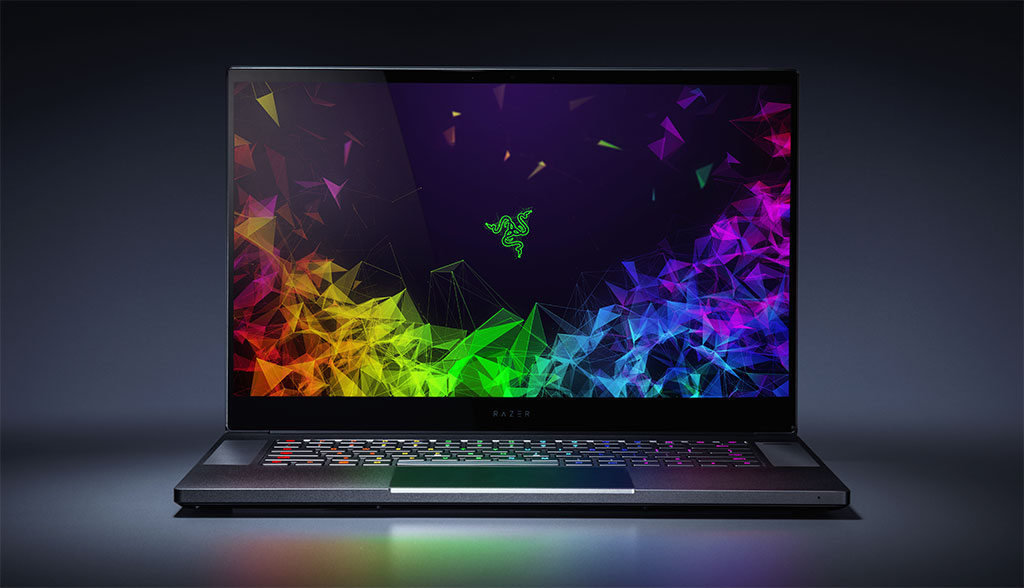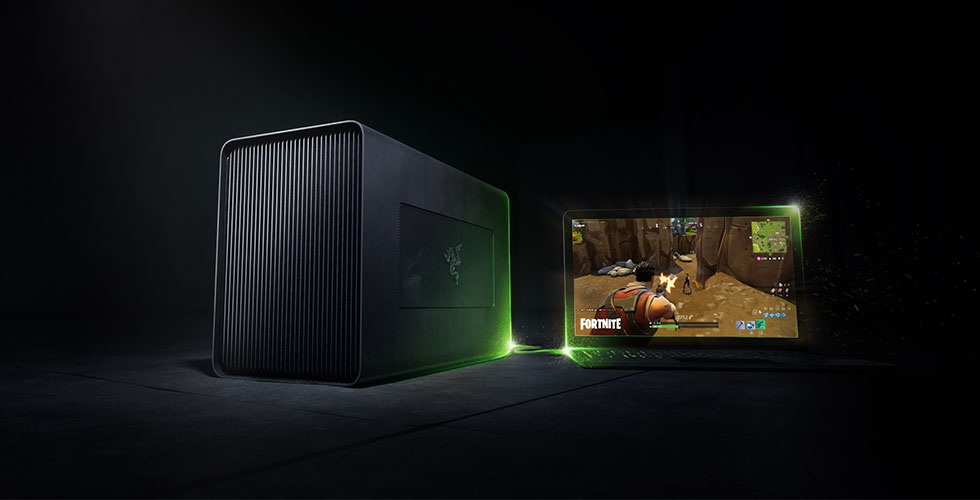Razer rolls out a bigger, faster Blade laptop and cheaper external GPU box
This sharpened Blade now has a 15.6-inch display and can be configured with a GeForce GTX 1070.

Razer's Blade laptop has served as the middle option sandwiched between the thinner Blade Stealth and more powerful Blade Pro, and like those other two models, it's seen a few hardware upgrades over the years. For the latest refresh, however, Razer has decided to enlarge the display—it now has a 15.6-inch panel instead of a 14-inch screen.
The company is pitching its sharpened Blade as the "world's smallest 15.6-inch gaming laptop," with a waistline that is either 0.66 inches or 0.68 inches thin, depending on the hardware configuration. It also utilizes a near bezel-less design, which helped Razer to squeeze a larger 15.6-inch panel into a smaller frame.
There are three display options—a Full HD 1080 panel with a 60Hz refresh rate, another 1080p panel with a faster 144Hz refresh rate, and a 4K panel (60Hz refresh rate) with multi-touch support. All three are IPS panels that have been individually "custom calibrated at the factory."
Razer also upgraded the internal hardware. The Blade now ships with an 8th generation Intel Core i7-8750H processor, which is a 6-core/12-thread CPU clocked at 2.2GHz to 4.1GHz with 9MB of L3 cache. It also ships with 16GB of DDR4-2667MHz RAM and either a 256GB or 512GB M.2 NVMe SSD.
Users can still buy a Blade with a GeForce GTX 1060 GPU, now with Max-Q design, but Razer also added a burlier GeForce GTX 1070 option, also based on Nvidia's Max-Q tech.
The new Blade is available today, with prices ranging from $1,899.99 to $2,899.99.

Launching alongside the retooled Blade is the Core X, essentially a cheaper version of the $499.99 Core V2 external graphics dock. As with other eGPU boxes, the idea is to beef up an under powered laptop with desktop-class graphics performance.
The biggest gaming news, reviews and hardware deals
Keep up to date with the most important stories and the best deals, as picked by the PC Gamer team.
The new Core X costs $299.99, so users stand to save a chunk of change over the Core V2. It comes at the cost of certain features, such as USB and Ethernet connectivity, and RGB (Chroma) lighting. However, there are some upgrades in the Core X as well.
For one, the aluminum chassis is wider than the Core V2 and can accommodate graphics cards that take up three slots, versus the slot support of the pricier model (which means you can't stick a 2.5-inch slot graphics card in the Core V2).
The Core X also has an integrated 650W power supply, up from 550W on the Core V2, and provides 100W of power for laptop charging via a single Thunderbolt 3 port.
Like the Core V2, the new Core X works with Razer's own laptops, in addition to other Windows 10 laptops with a Thunderbolt 3 port. Users with a macOS system can also now employ the Core X or Core V2 if they're running High Sierra 10.13.4 or higher, but are limited to Mac-compatible AMD Radeon cards.
The Core X is available now.
Paul has been playing PC games and raking his knuckles on computer hardware since the Commodore 64. He does not have any tattoos, but thinks it would be cool to get one that reads LOAD"*",8,1. In his off time, he rides motorcycles and wrestles alligators (only one of those is true).


